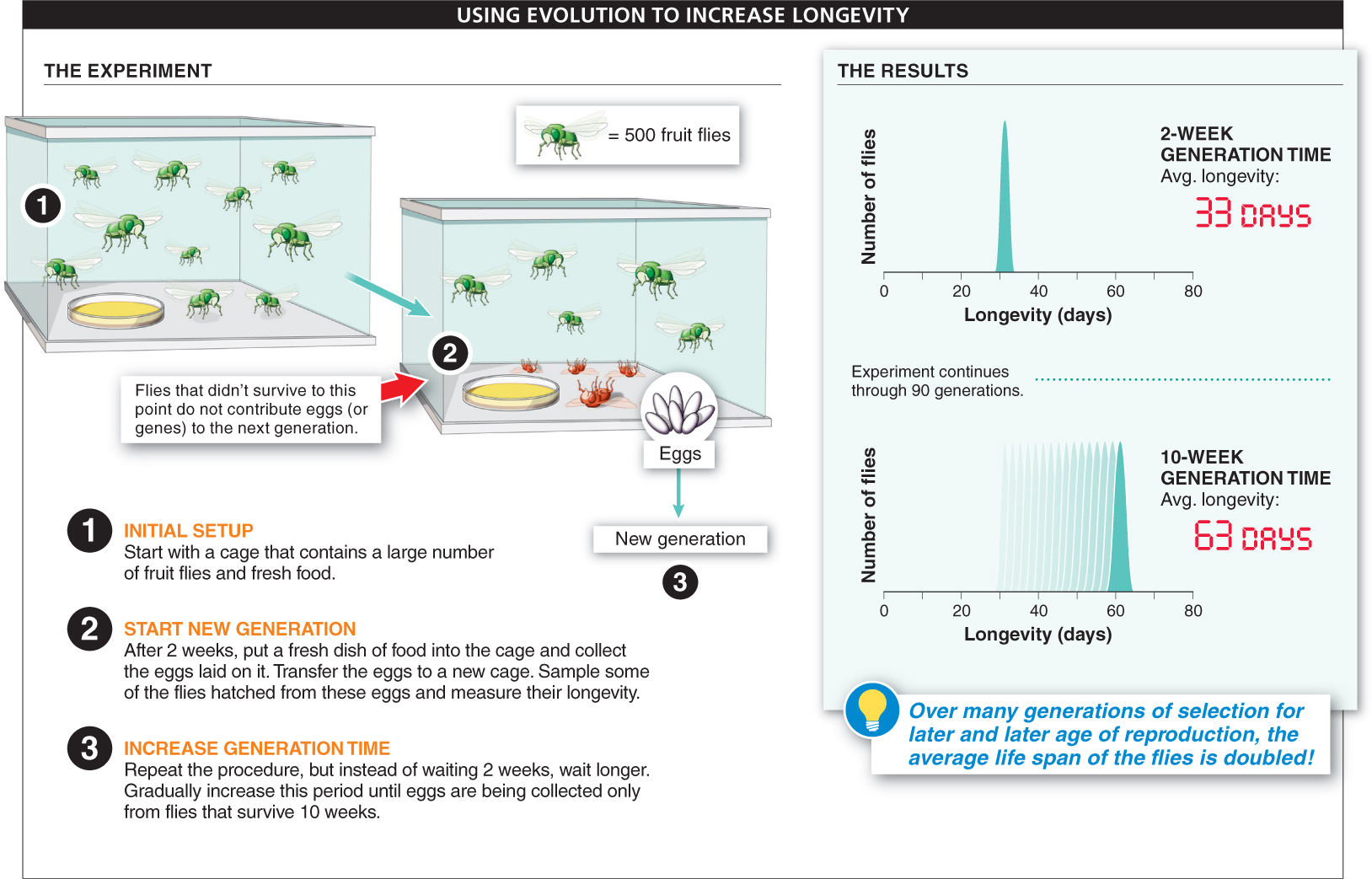Life extension is possible. Real, honest-
The results of these life-
Is it possible, with our current knowledge, to double longevity in humans?
One researcher thought that changing the force of natural selection on the flies might produce an evolution in their aging pattern. So, instead of collecting eggs at 2 weeks to start the new generation, he cleverly waited longer and longer (FIGURE 14-21). The first new generation had parents that had lived for 3 weeks. If any fly carried a mutation that caused it to die between 2 and 3 weeks, that fly did not contribute to the next generation and that mutation was not passed on.

After several generations, eggs were collected at 4 weeks instead of 3 weeks. At this point, all the flies making up the new generation had parents that had survived for 4 weeks. Any flies that died before 4 weeks of age didn’t contribute to the new generation. Natural selection was now able to reduce the prevalence of mutant genes responsible for early aging.
The experiment continued, progressively increasing the generation time to 5 weeks, then 6, 7, and ultimately 10 weeks—
594
The net result was the creation of a population of flies with much “cleaner” genomes. When put under ideal conditions outside the cages, these “super” flies did not experience aging until long after the original flies would have died. In fact, the average life span of the flies hatching from eggs harvested from parents of 10 weeks of age was more than 60 days—
TAKE-HOME MESSAGE 14.13
By increasing the strength of natural selection later in life, it is possible to increase the mean and maximum longevity of individuals in a population. This occurs in nature (as in porcupines and bats) and has also been achieved under controlled laboratory conditions.
Is it possible to use the forces of natural selection to increase longevity? Briefly describe how researchers have done so.
Yes. This has been repeatedly demonstrated with fruit flies in laboratory settings. Researchers initially placed fruit flies and food in a cage. Then, after two weeks, they placed fresh food in the cage and collected the eggs laid on it. After transferring the eggs to a second cage, they sampled flies from this new generation and measured their longevity. They repeated the procedure, but waited longer and longer each time to collect the eggs. In time, the only eggs collected were those from flies that had survived for 10 weeks. Therefore, only those who survived contributed eggs and genes to the next generation, and natural selection was able to reduce the prevalence of mutant genes responsible for early aging.
595